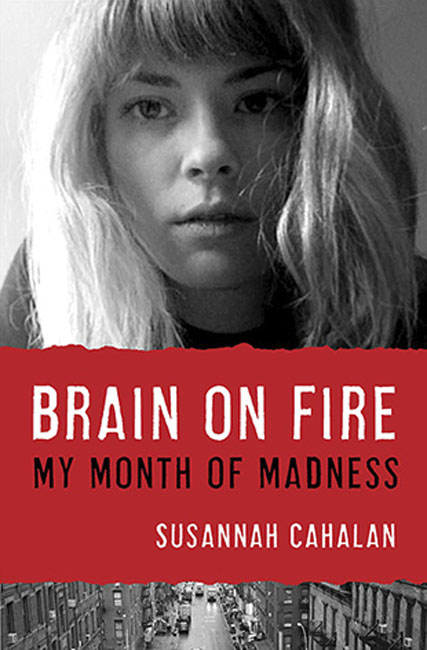Though “Brain on Fire” is written as a memoir, the tale of Susannah Cahalan’s fall into madness and ascent back to sanity is a horror story fit for any campfire.
In the book, Cahalan, a New York Post investigative reporter, chronicles the month when she suffered extreme medical trauma after getting a rare, and recently discovered, autoimmune disease. The disease’s name and its nature is the novel’s big reveal. Cahalan was only the 217th person in the world to be diagnosed with it since its discovery in 2007.
The narrative started in early 2009 when she woke up with two odd bug bites. Paranoia set in, and she insisted her apartment be sprayed despite an exterminator’s insistence that her living space was bug-free. Unbeknownst to Cahalan, this anxiety is the first sign of what was to come. She became dysfunctional at work, forgetting about meetings and botching stories. Following shortly were the intense mood swings and seizures. Cahalan was hospitalized and as her psyche began to rapidly deteriorate, a team of doctors began to work at diagnosing her. It took almost a month before they could begin to figure out what was wrong with her.
The concept of “Brain on Fire” is terrifying. Functionality and sanity are traits most people hold dearly, and the idea that a rare disease can snatch them away and leave doctors at their wits’ end is frightening. In recapping what happens to her, Cahalan scares readers.
What is most impressive about “Brain on Fire” is that Cahalan has little recollection of her month of insanity. She had to interview her parents, her boyfriend and a team of doctors to piece together her month in the hospital. Thanks partially to her talent as a journalist and to the fact that her parents kept journals, Calahan was able to recapture her month, leaving no holes in the narrative.
While Cahalan is a journalist and not a scientist, she does not struggle with explaining the science and medical terminology behind her condition and her month in the hospital. Her memoir is constructed on a back-and-forth dynamic between her experience and the science behind it, though sometimes Cahalan overloads the reader with science, explanations and her scientific anecdotes.
The memoir does not end at Cahalan’s release from the hospital, as she also writes about her months of recovery. It took seven months of recovery before Cahalan could return to work and even longer before she could regain her personality. Her narrative is less exciting during her months of recovery, which take up a third of the book.
The memoir has pacing problems by having the most exciting part of the narrative occur well before the end of the book. Perhaps Cahalan could have written a more condensed version of her recovery.
“Brain on Fire” clearly has a happy ending. Cahalan recovered, was able to return to her job and wrote a successful memoir about her experience. But the memoir still has a scary aspect to it — Cahalan’s doctors are still not sure how she got the disease. For the majority of people, the disease is caused by a tumor, but for Cahalan the disease was introduced by an unknown combination of external triggers. The descent into madness that Cahalan experienced could happen to anyone — and doctors are still not sure why.















